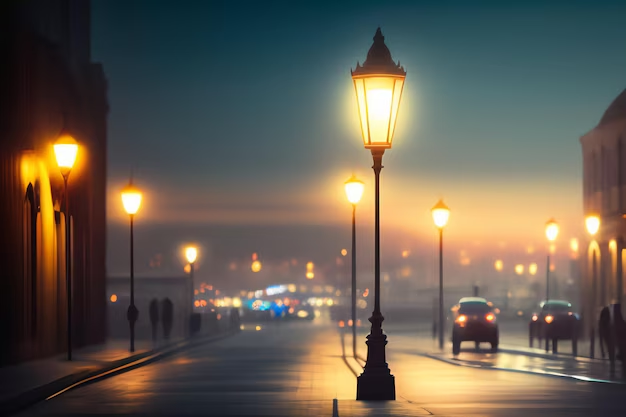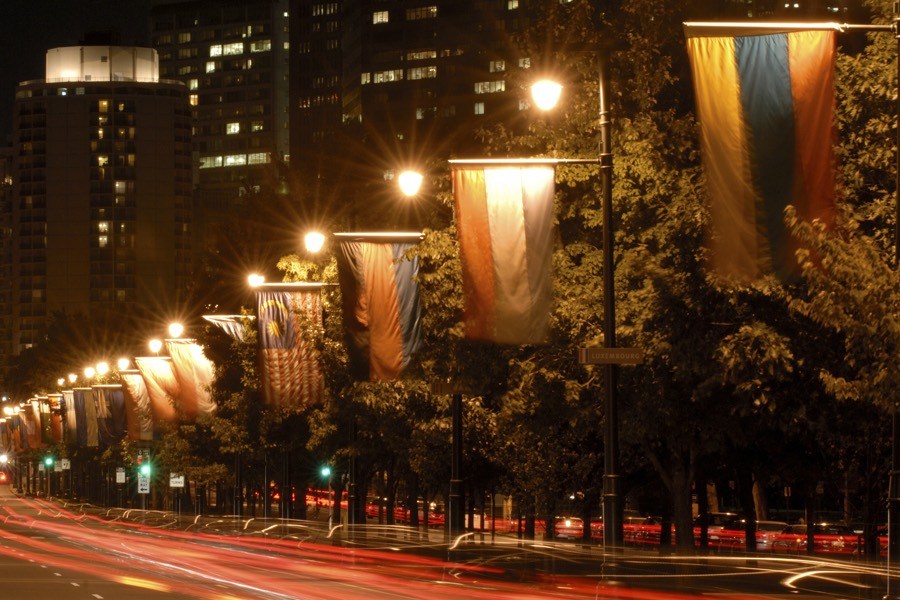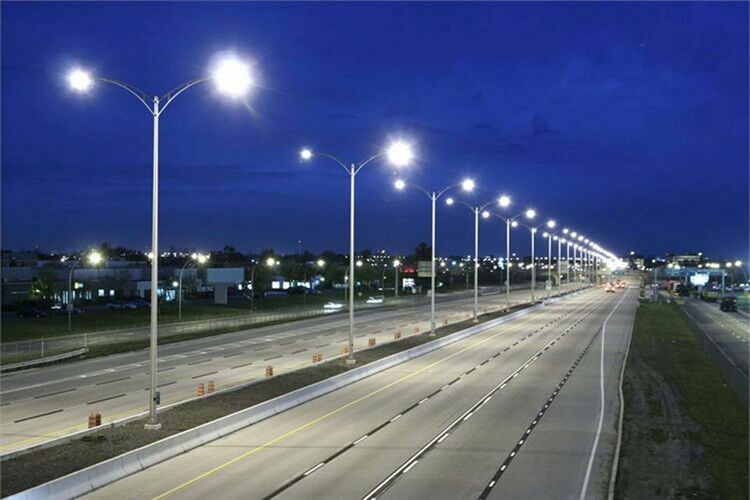Street lights are an essential part of modern urban life. Their impact is significant, providing safety, enhancing ambiance, and also involving considerable investment and maintenance. In this detailed guide, we will discover the role of street lights in urban planning, their development over time, and how technological advancements are making them more efficient and sustainable.
Contents
The Fundamentals of Urban Illumination
The Inception and Evolution of Street Lighting
The history of street lighting dates back to ancient civilizations, but the evolution into the electrically powered lamps we recognize today is a journey of innovation and necessity. From gas lamps to incandescent bulbs and now LED fixtures, each step forward has been driven by the need for safer, more efficient illumination. This progression has not only transformed the technology behind street lights but has also influenced their design and integration into the cityscape.

Understanding the Spectrum: Types of Street Lights
Modern street lights come in various types, each offering unique benefits and being suited for different environments. Incandescent bulbs, once standard, are giving way to more energy-efficient options like high-pressure sodium (HPS), metal halide, and light-emitting diodes (LED). As efficiency becomes a priority, cities are adapting their infrastructure to incorporate these advanced lighting solutions.
The Benefits and Drawbacks of Street Lights
Promoting Safety and Security
The most immediate and apparent benefit of street lights is increased safety and security. Well-lit streets help prevent accidents by improving visibility for drivers, cyclists, and pedestrians. Additionally, illuminated areas can deter criminal activity, contributing to a sense of security for residents. By extending the hours during which people feel comfortable being outside, street lights support vibrant, active communities.
The Aesthetic and Atmospheric Impact
Beyond safety, street lighting significantly affects the aesthetic and atmosphere of urban spaces. Strategic lighting design can accentuate architectural features, create ambiance, and influence the mood of a location. Whether it’s the soft glow that invites a leisurely evening stroll or the bright assurance along a bustling thoroughfare, the right lighting can transform the character of city streets.

Innovations and Sustainability in Street Lighting
The LED Revolution and Smart Lighting Systems
LED technology has revolutionized street lighting with its superior efficiency and longer lifespan. Cities are rapidly upgrading to LED systems, reducing energy costs and maintenance needs. Furthermore, the integration of smart lighting systems allows for dynamic control of light levels, even more, energy savings, and valuable data collection to further optimize urban lighting strategies.
Towards a Brighter and Greener Future
As issues of sustainability and environmental impact come to the forefront, street lighting is advancing towards greener solutions. Innovations like solar-powered lights and energy harvesting technologies pave the way for a future where street lighting is both efficient and environmentally friendly. These advancements promise a sustainable glow that brightens streets without dimming the prospects of future generations.
Continuing with the structure, let’s expand on the first part:
The Inception and Evolution of Street Lighting
The concept of street lighting is as old as civilization itself, with ancient Rome lighting their streets after dark using oil lamps placed in front of homes. However, the modern incarnation of street lights began in the 19th century with gas lamps, which lined boulevards across Europe and America. In the early 20th century, these were replaced by electric lights, a transition that laid the foundation for the intricate grids of urban lighting seen today.
The evolution of street lighting has been marked by continuous advancements. The invention of the incandescent bulb by Thomas Edison made electric street lighting more practical and widespread. Over time, incandescent bulbs gave way to more efficient and durable lighting technologies, such as fluorescent and high-intensity discharge lamps. In recent decades, the push for energy efficiency has led cities around the world to adopt light-emitting diodes (LEDs), which use significantly less energy and have a longer lifespan than their predecessors.

As outdoor lighting technology has advanced, so have the strategies for its implementation. Urban planners have learned to design lighting schemes that not only illuminate streets but also enhance safety, direct traffic flow, and contribute to the visual appeal of the urban environment. Today, the look and feel of a city at night are as much a part of urban design as the buildings and streets themselves, with lighting playing a crucial role in a city’s nighttime identity.
Understanding the Spectrum: Types of Street Lights
In today’s urban environment, street lights vary widely in types and technologies, each with its applications, benefits, and drawbacks. High-Pressure Sodium (HPS) lamps were once the gold standard for street lighting due to their efficiency and long service life despite their warm, yellowish glow. Metal Halide lamps, offering a brighter, whiter light, found favor in areas where color recognition is critical, such as car parks and sports fields.
The latest evolution in this spectrum is Light Emitting Diodes (LEDs). LED street lights surpass their predecessors by a significant margin in terms of energy efficiency, environmental friendliness, and life span. They provide better color rendering and uniformity of light, essential for visual clarity on the streets at night. Furthermore, LEDs open the door to smart lighting technologies that can adapt to various conditions and demands. A feature not feasible with traditional lighting systems.
Another emerging technology in street lighting is photovoltaic (PV) solar lights. These systems are entirely off-grid, drawing their power from the sun, and store it in batteries for nighttime use. This type of street light is especially useful in remote or environmentally sensitive areas. Where running traditional power lines is not feasible or desired.
Each type of street light has its place in urban planning, with the choice often depending on factors such as the specific needs of the area being lit, budget constraints, and long-term sustainability goals. As the technology continues to evolve, the trend is clearly moving towards more energy-efficient, environmentally friendly, and adaptable lighting solutions.

Promoting Safety and Security
The role of street lights in enhancing safety and security cannot be overstated. Well-lit streets reduce the risk of accidents for drivers, cyclists, and pedestrians by improving visibility. Studies have consistently shown that proper street lighting significantly reduces the incidence of traffic accidents and their severity when they do occur. It’s not just about seeing and being seen. Illuminated streets also help drivers assess the speed and distance of other road users more accurately, leading to safer driving behaviors.
In terms of security, the presence of street lights has a profound effect on reducing crime rates. Public areas that are well-lit at night are less likely to become hotspots for criminal activity, as perpetrators prefer to operate in darkness where their chances of detection are lower. Thus, improved lighting in urban areas can deter potential criminals, contributing to a safer environment for residents.



